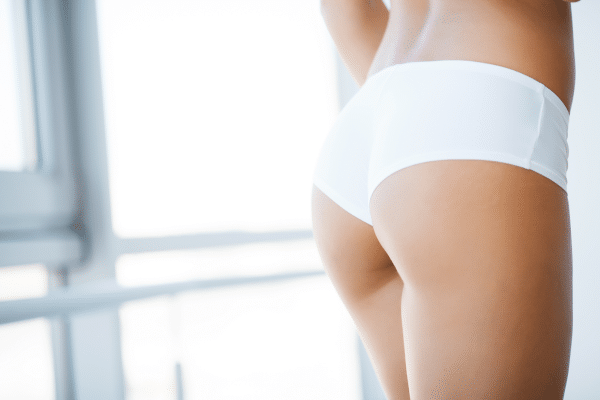Mommy Makeover Meaning: Questions Answered
Mommy makeover procedures have become popular with women who are unhappy with their post-pregnancy bodies. Pregnancy and childbearing can take a transformative toll on a woman’s body, and sometimes diet and exercise just aren’t enough. You might have heard from mommies who have undergone a makeover and have questions of your own. Here are some common questions to know about mommy makeover surgery.
What is a Mommy Makeover?
A mommy makeover is just that— a makeover. It’s a catch-all term for a set of surgical procedures that have the goal of restoring a woman’s post-pregnancy body and are often done all at once or within a couple sessions. This makeover is customized to fit the needs of your post-pregnancy body, which can vary since pregnancy and childbearing affect every woman’s body differently.
What can be fixed with a Mommy Makeover?
The mommy makeover procedure includes some of the the most common surgical procedures that can correct issues that have the hardest impact a woman’s body during pregnancy. This includes the excess skin on the stomach, breast surgery, and lower body. The procedures typically performed:
- A tummy tuck, which can tighten the underlying abdominal muscles and remove excess fat, excess skin, and stretch marks.
- A breast augmentation, breast reduction, or breast lift, which can restore sagging breasts to their pre-pregnancy shape and size.
- Liposuction procedures, which can remove excess fat from various areas that is stored during childbearing and can be resistant to diet and exercise.
These various procedures can often be completed within one session by a skilled surgeon, meaning your downtime and recovery will be reduced. Many mommies also undergo nonsurgical procedures as part of their makeover process if they are beginning to feel the effects of aging or stress.
What should I consider before I undergo a Mommy Makeover?
Your overall health is the most important thing to consider before you commit to your procedures. It’s very important that you’re able to undergo invasive surgery and successfully heal from it, as this will have the most impact on your results. You should also consider your reasons for pursuing a mommy makeover, and be ready to discuss them during your consultation with Dr. Sieber.
To make sure you get the best out of your results, you should make sure you have no further plans for pregnancy, as this means you might require another procedure.
What is the recovery from a Mommy Makeover like?
Your mommy makeover recovery time will depend on how extensive your makeover is. Healing your incisions might require maintenance of any drains that are placed to help collect fluid that builds up, and wearing compression garments to aid blood flow.
You’ll need to refrain from certain activities that might agitate the surgical sites, and any pain can be managed with prescribed medications. Be sure to follow any instructions given by Dr. Sieber after your procedure.
 Questions and Answers
Questions and Answers
What is the difference between a tummy tuck and a mommy makeover surgery?
A tummy tuck, also known as abdominoplasty, primarily focuses on enhancing the appearance of the abdominal area. In contrast, a “mommy makeover” typically involves rejuvenating both the abdominal region and the breasts. This comprehensive approach may encompass breast lift, breast augmentation, or liposuction. To determine the most suitable procedure for your specific needs, a personal consultation is required for the doctor to assess your body.
How effective is a mommy makeover?
Based on RealSelf’s regularly updated reviews from real patients, a striking 95% of individuals stated that undergoing a mommy makeover surgery is a valuable decision. The primary driver of their contentment is the remarkable increase in self-assurance it affords, empowering them to excel in their roles as mothers while experiencing both an improved look and enhanced well-being.
Does mommy makeover include thighs?
Frequently, a mommy makeover procedure includes the combination of a tummy tuck with a breast lift or augmentation. However, the components can encompass a variety of options, such as liposuction, tummy tuck, breast lift, arm lift, thigh lift, and various other forms of breast enhancement, tailored to the patient’s specific needs and desires.
Contact Us
The meaning of a Mommy Makeover can encompass a comprehensive list of surgical procedure within the realm of plastic surgery procedures. It typically combines breast augmentation with abdominal enhancements to help women regain their confidence and body shape post-pregnancy. This transformative procedure has become a popular choice, offering a solution for those seeking to rejuvenate their appearance.
If you have any further questions and would like to discuss them, contact our office for a consultation with plastic surgeons Dr. Sieber.



 Questions and Answers
Questions and Answers It’s also a common technique used for lip enhancement. Also, fat transfer can help smooth out all types of abnormalities like those that result from injuries or poorly performed liposuction.
It’s also a common technique used for lip enhancement. Also, fat transfer can help smooth out all types of abnormalities like those that result from injuries or poorly performed liposuction. You Should Already Be Close to Your Ideal Weight
You Should Already Be Close to Your Ideal Weight Brazilian butt lifts have become increasingly popular as the leading butt enhancement (buttock augmentation) surgery in the world. While butt implants have been performed since the 1960s, fat transfer procedures — which is what Brazilian butt lifts are — are relatively new.
Brazilian butt lifts have become increasingly popular as the leading butt enhancement (buttock augmentation) surgery in the world. While butt implants have been performed since the 1960s, fat transfer procedures — which is what Brazilian butt lifts are — are relatively new. No, health insurance plans only cover plastic surgeries sometimes, and BBLs are not included on the list of covered procedures.
No, health insurance plans only cover plastic surgeries sometimes, and BBLs are not included on the list of covered procedures. Your surgeon knows that your belly button needs to look great after surgery. A well-positioned, natural looking bellybutton is definitely part of the results you’ll see from your procedure.
Your surgeon knows that your belly button needs to look great after surgery. A well-positioned, natural looking bellybutton is definitely part of the results you’ll see from your procedure. Why does my belly button look weird after a tummy tuck surgery?
Why does my belly button look weird after a tummy tuck surgery?